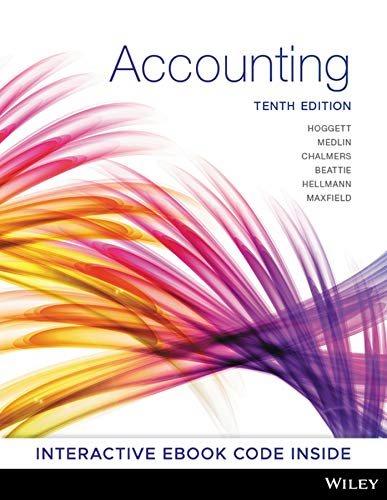Read the below article and answer the questions that follow. Dick Smith: Former director wasnt concerned by
Question:
Read the below article and answer the questions that follow.
Dick Smith: Former director ‘wasn’t concerned’ by ballooning inventory Failed retailer Dick Smith had too much inventory, including a 10‐year supply of self‐branded batteries, a court has heard, as executives were questioned by receiver Ferrier Hodgson over the collapse of the company.
Dick Smith collapsed in January with debts around $400 million, and the case, which is being held in the Supreme Court of New South Wales, has heard from several executives. Bill Wavish, a former chief financial officer of Woolworths was appointed to the board of Dick Smith by private equity firm Anchorage Capital in 2013, told the court he thought the inventory level of $170 million was too low when he joined the company. After negotiations with management it was increased to $200 million, with a provision to take it up to $300 million for the peak Christmas shopping period.
But in January 2015, Mr Wavish said ‘an orange light started to flash’ when Dick Smith’s inventory did not start dropping back to the pre‐Christmas levels. ‘It was $100 million too high,’ he told the court.
Mr Wavish was asked by counsel for the receivers why the flashing light in his mind was orange and not red. ‘Many retailers have this problem, the issue is how management respond,’ he replied. ‘Dick Smith management had a plan and a good track record. I let them get on with it.’
‘You don’t maximise rebates at your peril’
Anchorage Capital bought the Dick Smith chain from Woolworths for $94 million in September 2012, raising more than $500 million when it floated it on the stock market 15 months later.
Fellow Dick Smith director, Lorna Raine, told the court she had a similar confidence in management.
When asked if she became concerned when inventory levels weren’t falling she replied, ‘not that I recall’. Ms Raine was a member of Dick Smith’s Finance and Audit Committee and was asked if, as the company’s financial position deteriorated in 2015, she had turned her mind to how much cash it would need to meet its obligations. She replied, ‘no’.
Mr Wavish, who was also chairman of that committee, gave an insight into the state of Dick Smith’s accounting practices when he revealed it had no capability to forecast cash flows when he arrived in 2013. ‘It wasn’t required [by former owner] Woolworths,’ he said, adding that he instigated weekly and daily cash flow reporting.
Much of the questioning continued to centre around payments from suppliers and the way they were accounted for. The counsel for Ferrier Hodgson wanted to know why some payments, known as
‘rebates’, were booked as profits before Dick Smith had sold the goods they related to.
Mr Wavish said retailers could not survive without rebates, telling the court, ‘rebates exceed profits.
You don’t maximise rebates at your peril’. Both Mr Wavish and Ms Raine defended the decision of the Dick Smith Board to approve dividends in 2015.
Mr Wavish also defended the company’s policy of continuing to open new stores in 2014, despite its deteriorating finances. ‘Just because times are tough, doesn’t mean you don’t open new stores,’ he said.
Required Access the 2015 financial report of Dick Smith (www.asx.com.au/asxpdf/20150818/pdf/430kvhrl8cpg0l.pdf)
and answer the following questions.
(a) For the purposes of the statement of cash flows, identify how cash is defined.
(b) Identify the most significant source or use of:
i. cash flows from operating activities ii. cash flows from investing activities iii. cash flows from financing activities.
(c) Identify and explain any non‐cash financing or investing transactions that occurred during the last financial year.
(d) Discuss if Dick Smith’s cash position at the end of the 2015 financial year is better or worse than the previous year.
(e) How does Dick Smith classify dividends and interest received and paid in the statement of cash flows?
(f) Explain the impact on cash flows of a build‐up in inventory.
(g) How is GST treated in the statement of cash flows?
Step by Step Answer:

Accounting
ISBN: 9780730363224
10th Edition
Authors: John Hoggett, John Medlin, Keryn Chalmers, Beattie Claire, Hellmann Andreas, Maxfield Jodie





